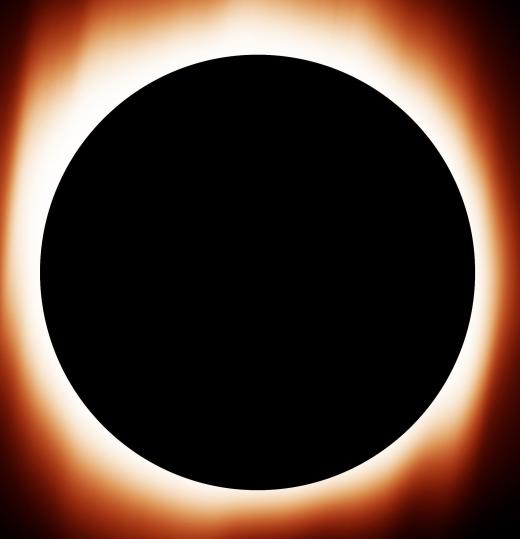What is Syzygy?
 Mary McMahon
Mary McMahon
The term "syzygy" is used in astronomy to describe a situation in which three or more astronomical bodies are aligned in a roughly straight line. People most commonly use this term to talk about the relationship among the Sun, Moon, and Earth; syzygy affects the tides on Earth, and in extreme cases, it can also cause eclipses. This term is also used in other fields as well, usually in the sense of an unusual alignment or unity.
Syzygy isn't just for Earthlings. The term can technically be used to describe any sort of linear alignment of celestial bodies, in any solar system. It is also used to describe unusual alignments in general, even in the celestial bodies involved are not in a line. For example, on occasions all of the planets are on the same side of the Sun, and this is termed syzygy.

This word comes from the Greek suzugia, which means "union," and in English, it's a very intriguing word, at least for word geeks. It's the shortest word with three Ys, for example, and it is one of the longest words without any common vowels. While it would take quite a fortuitous hand in Scrabble to be able to assemble "syzygy," the word would be worth 21 points before any letter or word bonuses, with a blank tile standing in for one of the Ys, since Scrabble sets only have two Y tiles.
Viewed from Earth, there are two main forms of syzygy. When the Sun and Moon are in opposition, it means that they appear to be on either side of the Earth, whereas when the Sun and Moon are in conjunction, they appear to be very close to each other in the sky. The terms "opposition" and "conjunction" can also be used to describe syzygy in general. Knowing what they mean from the perspective of Earth can help you visualize an instance of syzygy when it is described. Syzygy causes spring tides, because the combined gravitational pull of the Moon and Sun works together on the Earth's surface. In some cases, conjunction can cause a solar eclipse, when the moon is aligned just right.
The study of syzygy can be extremely interesting for astronomers. Astronomical bodies move around quite a bit, thanks to the fact that some of their orbits vary radically, and learning to track and predict the movements of celestial bodies can help astronomers to learn more about the solar system. Being aware of an upcoming syzygy can also allow astronomers to predict something like an eclipse; thanks to modern advances in astronomy, it is possible to tell when, precisely, the eclipse will happen, and where on Earth the eclipse will be visible.
AS FEATURED ON:
AS FEATURED ON:











Discussion Comments
The information is great and helpful
Not an easy word to pronounce. It goes something like this: si (as yes in Spanish, the letter z and the letter g) sizg, with the accent on si.
Reading the daily Wisegeek email on this subject as follows: The term "syzygy" is used in astronomy to describe a situation in which
three or more astrological bodies are aligned in a roughly straight line.
Post your comments